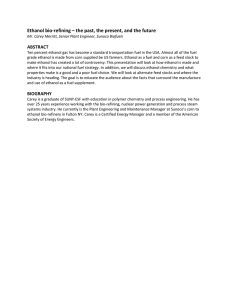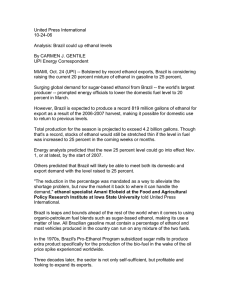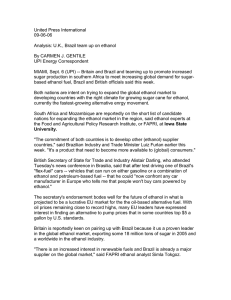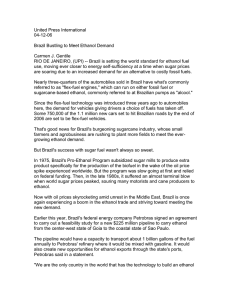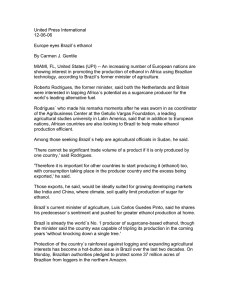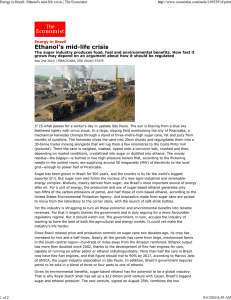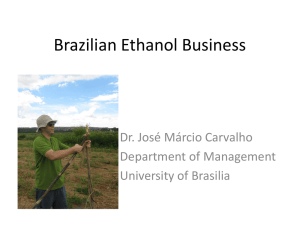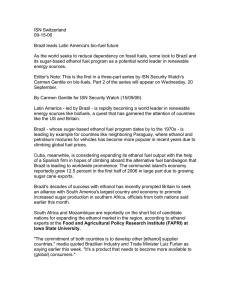Associated Press 04-18-06
advertisement
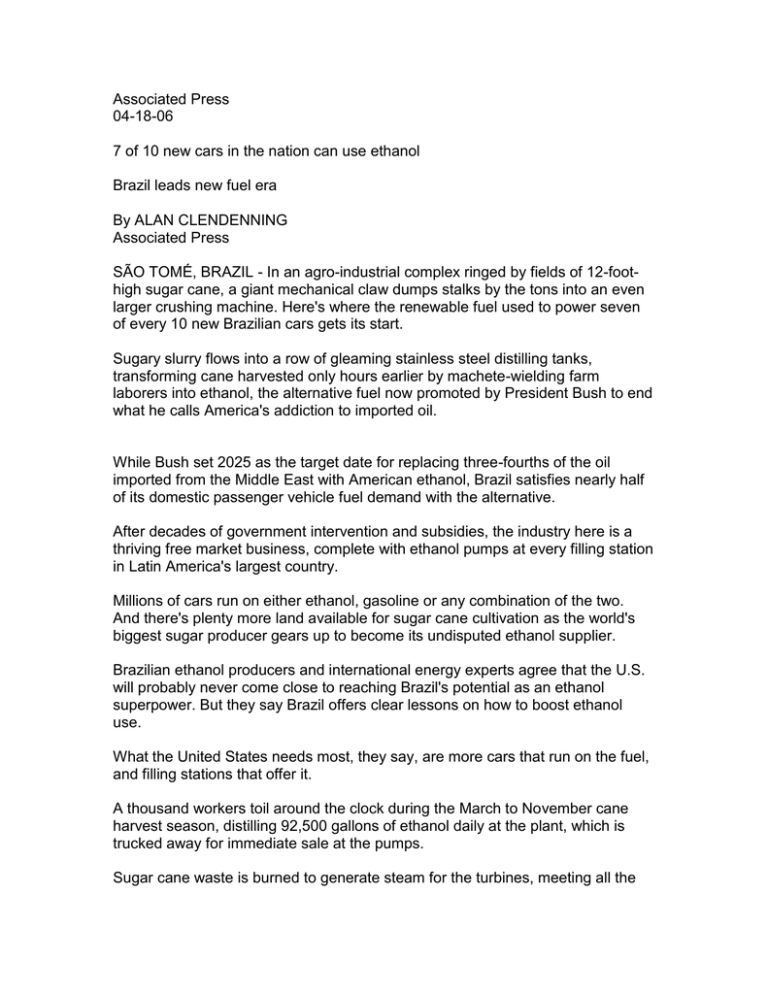
Associated Press 04-18-06 7 of 10 new cars in the nation can use ethanol Brazil leads new fuel era By ALAN CLENDENNING Associated Press SÃO TOMÉ, BRAZIL - In an agro-industrial complex ringed by fields of 12-foothigh sugar cane, a giant mechanical claw dumps stalks by the tons into an even larger crushing machine. Here's where the renewable fuel used to power seven of every 10 new Brazilian cars gets its start. Sugary slurry flows into a row of gleaming stainless steel distilling tanks, transforming cane harvested only hours earlier by machete-wielding farm laborers into ethanol, the alternative fuel now promoted by President Bush to end what he calls America's addiction to imported oil. While Bush set 2025 as the target date for replacing three-fourths of the oil imported from the Middle East with American ethanol, Brazil satisfies nearly half of its domestic passenger vehicle fuel demand with the alternative. After decades of government intervention and subsidies, the industry here is a thriving free market business, complete with ethanol pumps at every filling station in Latin America's largest country. Millions of cars run on either ethanol, gasoline or any combination of the two. And there's plenty more land available for sugar cane cultivation as the world's biggest sugar producer gears up to become its undisputed ethanol supplier. Brazilian ethanol producers and international energy experts agree that the U.S. will probably never come close to reaching Brazil's potential as an ethanol superpower. But they say Brazil offers clear lessons on how to boost ethanol use. What the United States needs most, they say, are more cars that run on the fuel, and filling stations that offer it. A thousand workers toil around the clock during the March to November cane harvest season, distilling 92,500 gallons of ethanol daily at the plant, which is trucked away for immediate sale at the pumps. Sugar cane waste is burned to generate steam for the turbines, meeting all the plant's electricity needs. Excess power will soon light up half the homes in São Tomé, a southern Brazilian town of 6,000. The technology isn't cutting edge, but the industry is making profits like never before and has a bright future thanks to a 1970s decision by Brazil's former military dictators to subsidize ethanol production and require distribution at every gas station. It will be hard for the U.S. to match Brazil's success. "Since the government does not dictate what happens in the marketplace, the process will be much slower than what Brazil experienced," said Amani Elobeid, an economist at Iowa State University. A small but growing number of American vehicles can run on the U.S. version of ethanol called E85, which is 85 percent alcohol distilled from corn and 15 percent gasoline, but the fuel is available at only 610 U.S. filling stations.

